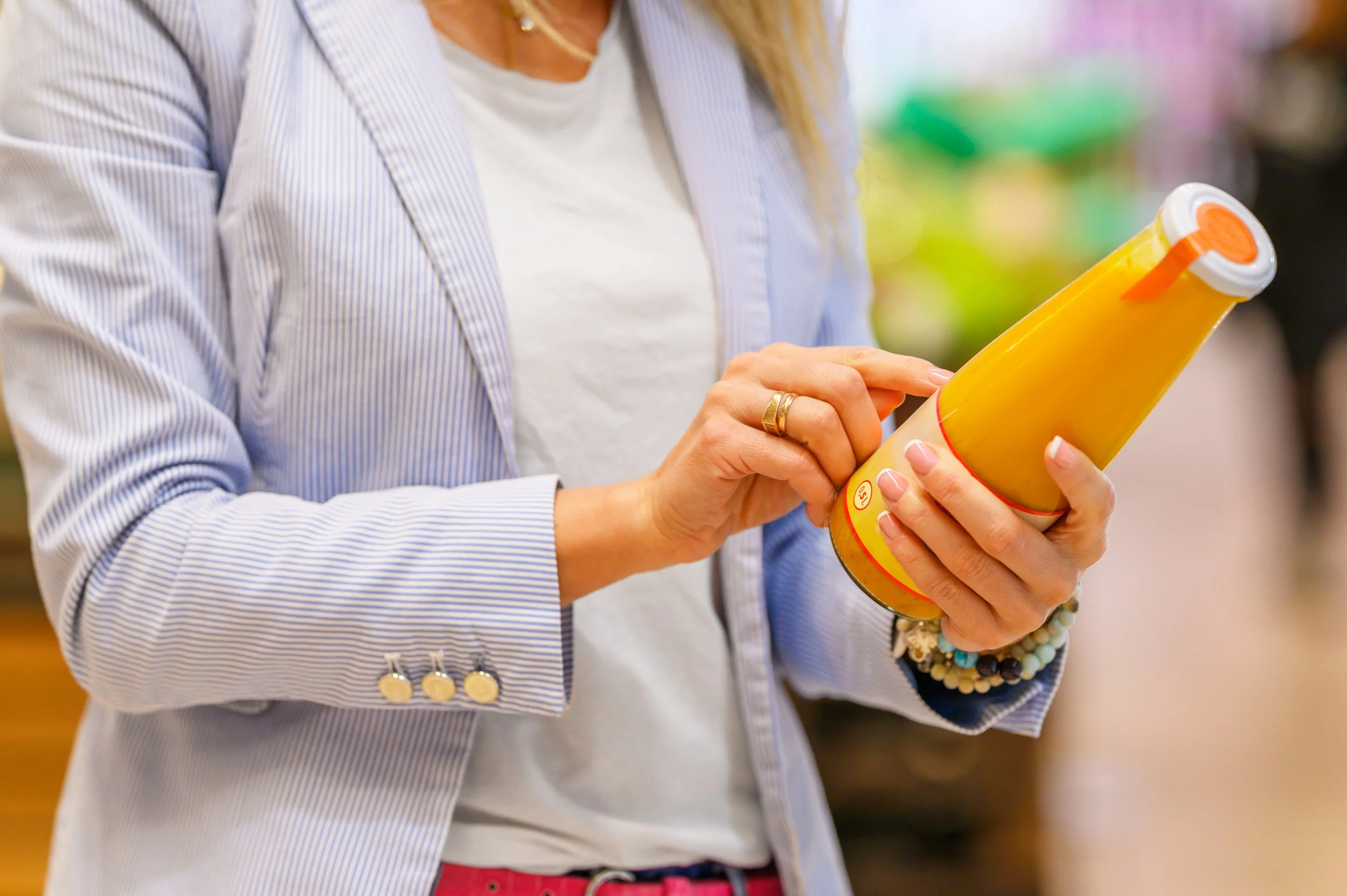How to Read a Nutrition Label
Nutrition labels help to tell you what's in the food you're buying, but they can be quite tricky to navigate. When you're trying to be mindful of what you're consuming, the confusion nutrition labels bring can make it that much more difficult. So today, I want to share some tips to help you properly read a nutrition label so you can feel confident in knowing you are buying the right products for yourself.
Pay attention to the serving size
One of the easiest ways to convince consumers into thinking a product is low-calorie, low-sugar, or low-fat is to make the serving size smaller than what anyone would typically consume. When you quickly glance at the nutrition label on your favorite snack, you might see only 5g of sugar, but you don't notice that this is only for a small handful. If you know that you typically finish a whole bag in one sitting, a serving size of one handful isn't realistic. Look at the serving size carefully, and then you can accurately calculate how many servings you'll probably consume in one sitting.
Understand the percent daily values
Now that you've compared the serving size to how much you'll actually eat, you should understand how much of each nutrient is in your food. The daily value percentage tells you how much of the recommended daily intake for each nutrient this product contains. Be especially careful of the daily value percentage of saturated fats and sugars.
Read and understand the ingredient list
Ingredient lists can't lie, but they can be deceiving. If a product is advertised as "no sugar," check the ingredients to see if there are any sugar alternatives. Although these ingredients aren't simple white sugar, they are still high in sugar content— and you'll want to be vigilant when knowing what you're looking for in these ingredient lists. Ingredients are also listed in order from containing the highest amount to the lowest. If a product advertises that it includes something healthy like vegetables, check the ingredients to see if it's near the top or bottom of the list. If it's near the bottom, it's probably an insignificant amount, but this allows companies to advertise healthy foods as if they are the main ingredients.
Take note of the health claims
If a company advertises any health claims on their food packaging, take a second look. Many of these marketing words, such as "healthy" and "natural," don't mean anything concrete. These words are placed on packaging to help you feel confident that you're buying something healthy, but knowing how to read your nutrition label is the only accurate way to know for sure.
It takes some practice, so every week during your grocery runs, take a few extra minutes to study some labels throughout the store and practice. Before long, you'll be a nutrition label reading pro!




